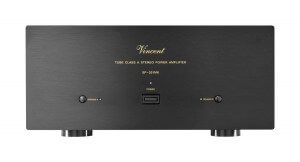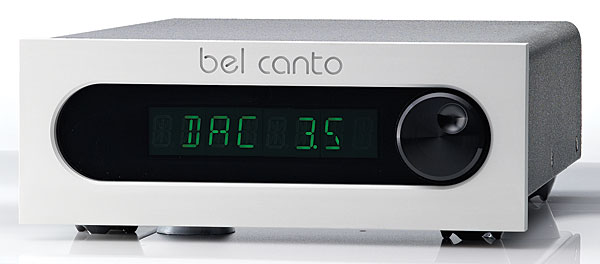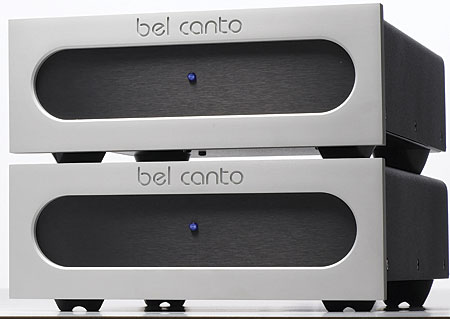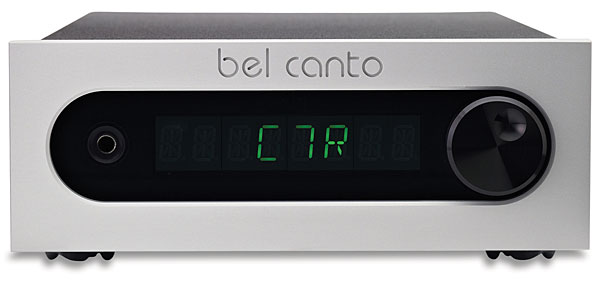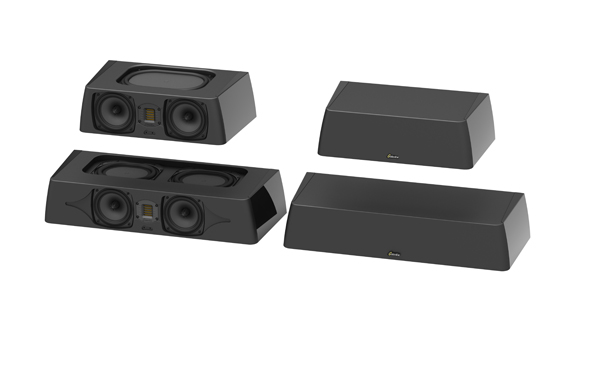
Yes, they are here, in stock and on demo for interested parties.
The photos don’t show it, but their 11 ” depth specification is real; way bigger than the 4″ depth of the SuperSat center speakers, and it doesn’t take much imagination to expect deeper bass When I looked at the specs and saw bass response down to 45Hz for the SCX and 36Hz for the SCXL that said to me that they would perform very well if used in pairs as bookshelf stereo speakers without a subwoofer, so when I got my demos I put two SCXL on speaker stands as a stereo pair . Verdict – they live up to their specs on bass and they sound amazingly like the Triton 7. I don’t expect anyone to buy the new SuperCenters for bookshelf use, though they would be perfect for many rooms with fixed bookshelves that lack height for a substantial bookshelf speaker..
The real test came when I went to a customer’s home with the SuperCenter XL to test against his SuperSat 60C. He put his receiver in Direct Mode so that full range music was sent to the center speaker. In this mode the new SuperCenter was clearly superior. Once the receiver was set for a crossover frequency to reduce the bass the superiority in dynamics and bass was still audible. He was pleased and bought then new SuperCemter.
This gentleman is a serious audiophile/videophile, with a 120″ screen projection system in a completely light-controlled and acoustically treated theater room so his standards and expectations may be greater than most of us. However, for those who want to make a change I allow 80% of purchase price on trade in of GoldenEar SuperSat centers.
Here is GoldenEar’s product information release
GoldenEar’s new SuperCenter X (SCX) and SuperCenter XL (SCXL) center channel loudspeakers have been developed in response to requests by dealers and their customers for more substantial center channel loudspeakers. They are most appropriate for use in nstallations that can accommodate larger units, and that don’t necessarily require the more compact, svelte profiles and/or on-wall or on-bracket mounting options of our very popular and highly reviewed SuperSat center channels.
The SCX and SCXL are ultra-high performance center channels appropriate for the highest quality home theater systems. They are designed to perfectly complement and match our Triton Tower and Aon Bookshelf loudspeakers, both sonically and cosmetically. Their sophisticated industrial design is both attractive and functional, both minimizing their apparent size as well as enhancing their acoustic performance. Both new center channels incorporate a D’Appolito Array of 2 newly developed long-throw 5-¼” bass/midrange drivers surrounding one of our signature High Velocity Folded Ribbon (HVFR) tweeters. The 5-¼” drivers incorporate spiderleg cast baskets, for minimal internal reflection, as well as multi-vaned phase plugs, to minimize cross-apex wave propagation interference. Both also utilize top-mounted pressure-coupled quadratic planar low frequency radiators that both extend the bass response as well as provide the bass/midrange drivers with ideal acoustic loading and damping. Only 1” of clearance is required above the bass radiators. The SCX incorporates one 7”x10” planar radiator, while the SCXL benefits from dual 6-¾” x 8”units.
Sonically, the new centers offer the same lifelike, highly detailed, high-resolution, smooth, open, boxless sound quality that our SuperSats are famous for, with even greater dynamic range, impact and low frequency extension. The retail price of the SuperCenter X is $599; the SuperCenter XL is $799.
Specifications:
SuperCenter X- Dimensions: 5 ¾” H x 20” H x 11”D,
Weight: 15 lbs.,
Frequency Response: 45 Hz- 35 kHz,
Efficiency 90 dB,
Nominal Impedance:
Compatible with 8 ohms,
Driver Complement: Two 5-¼” cast-basket bass/midrange drivers, One High-Velocity Folded Ribbon (HVFR™) radiator, One 7” x 10” quadratic planar low frequency radiator,
Rec. Amplification: 20-200 watts/channel $599 each
SuperCenter XL- Dimensions: 5 ¾” H x 29” W x 11” D, Weight: 21 lbs., Frequency Response: 36 Hz. – 35 kHz.,
Efficiency: 91 dB, Nominal Impedance: Compatible with 8 ohms,
Driver Complement: Two 5-¼” cast-basket bass/midrange drivers, One High-Velocity Folded Ribbon (HVFR™) high-frequency radiator, Two 6-¾” x 8” quadratic planar low-frequency radiators.,
Rec. Amplification: 20-250 watts/channel $799



